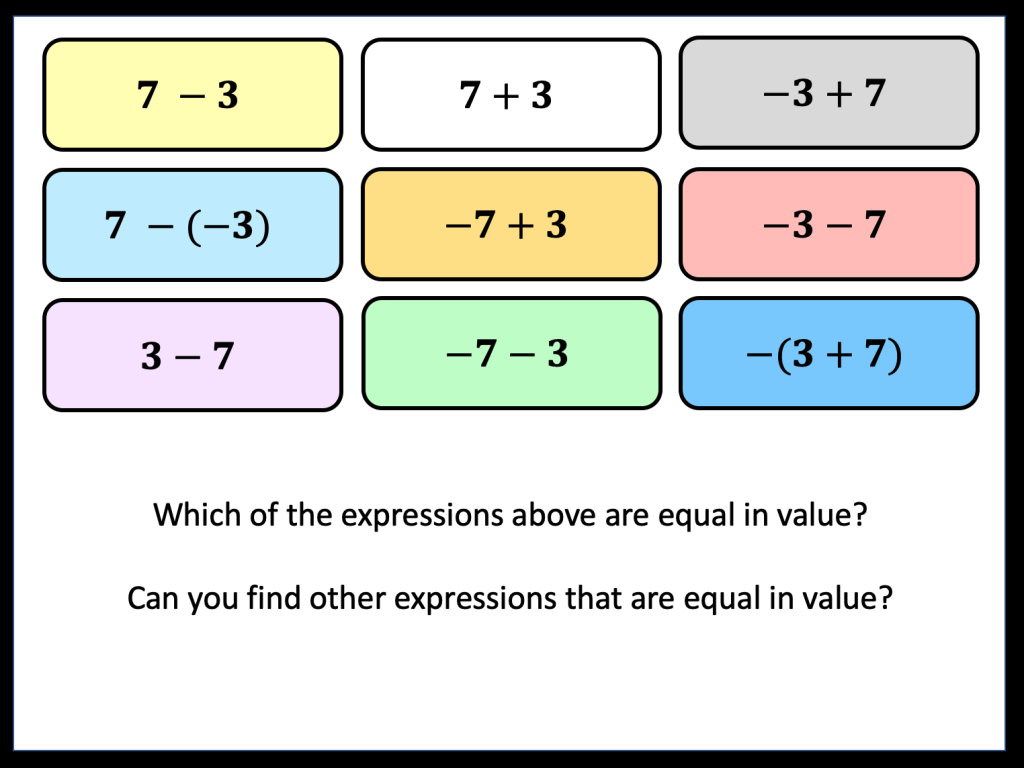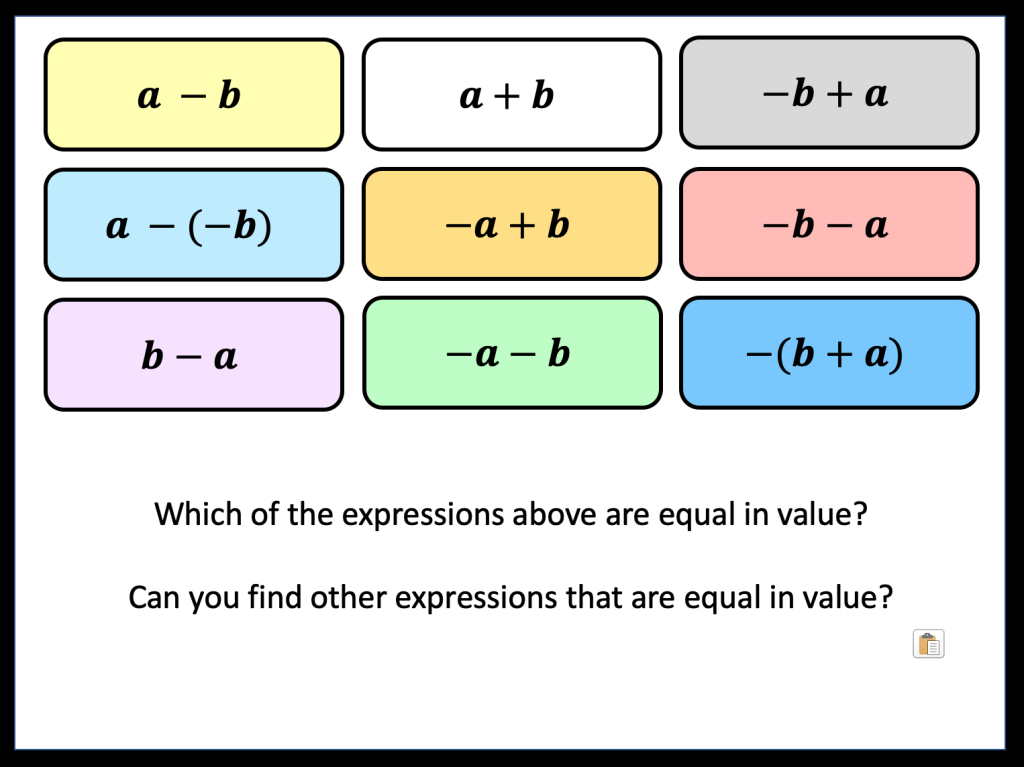I will be looking at Plan and Elevation next term and then moving on to Volume of 3D shapes.
I wanted to practise Plan and Elevation and then link it to Volume.
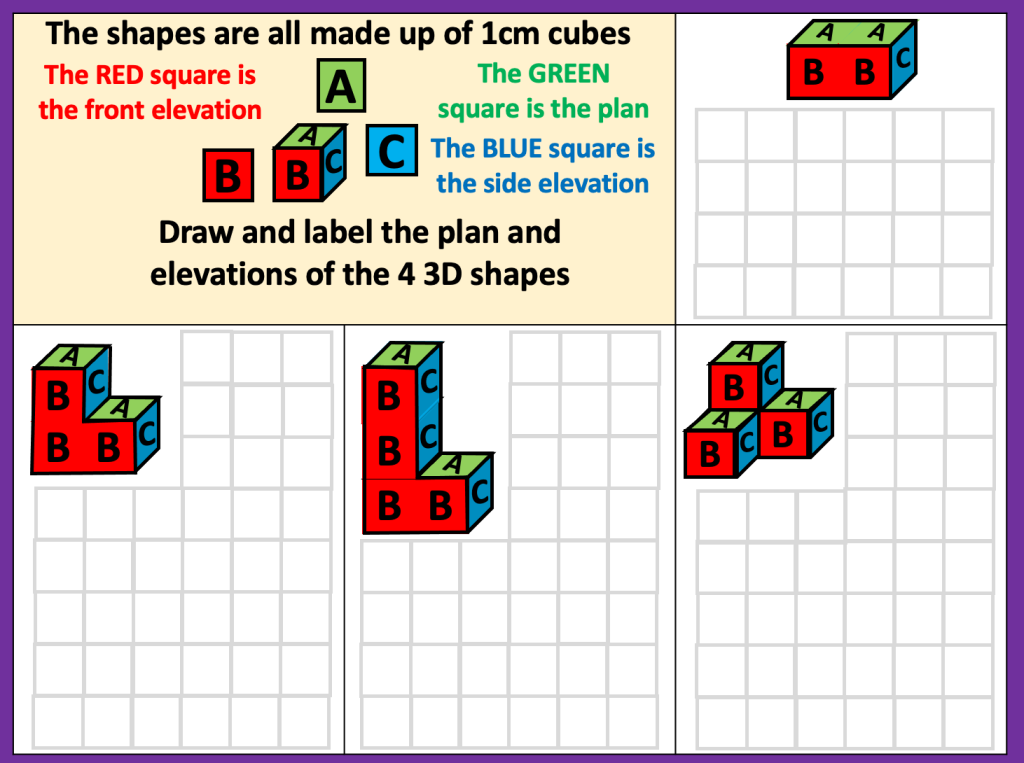
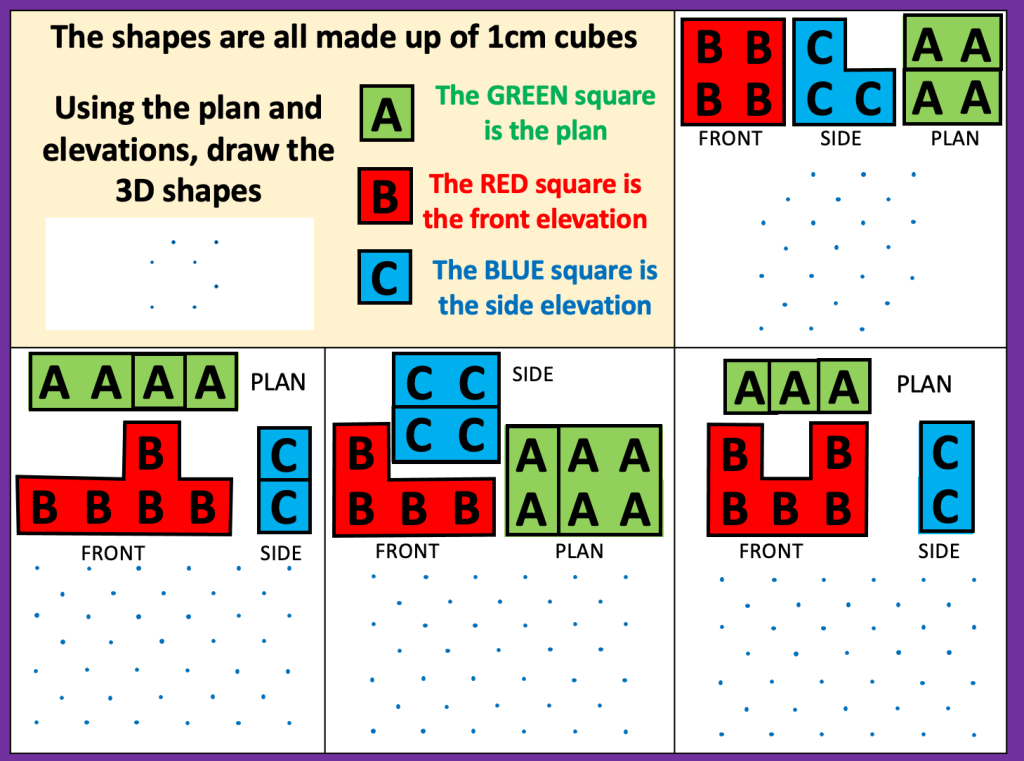
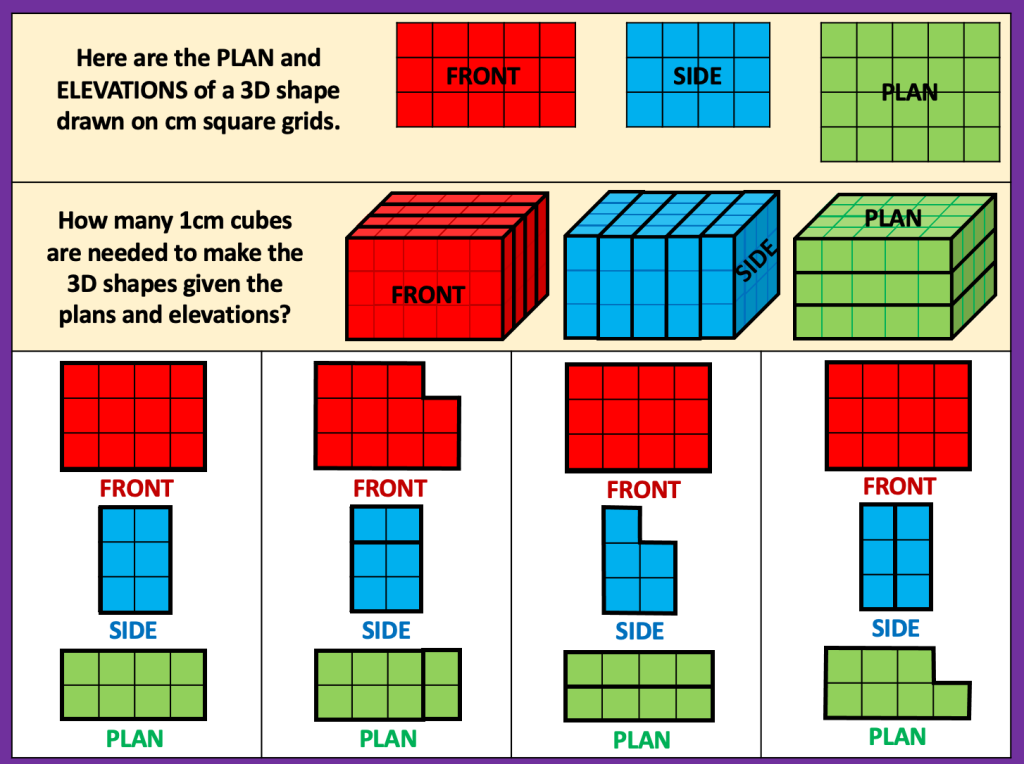
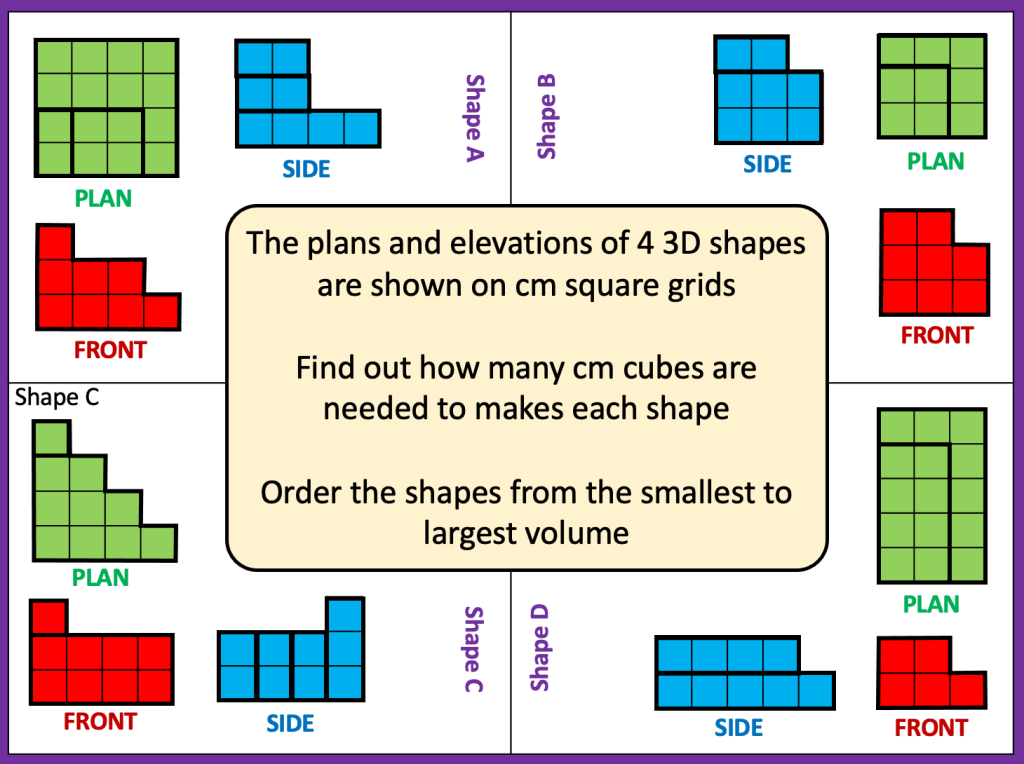
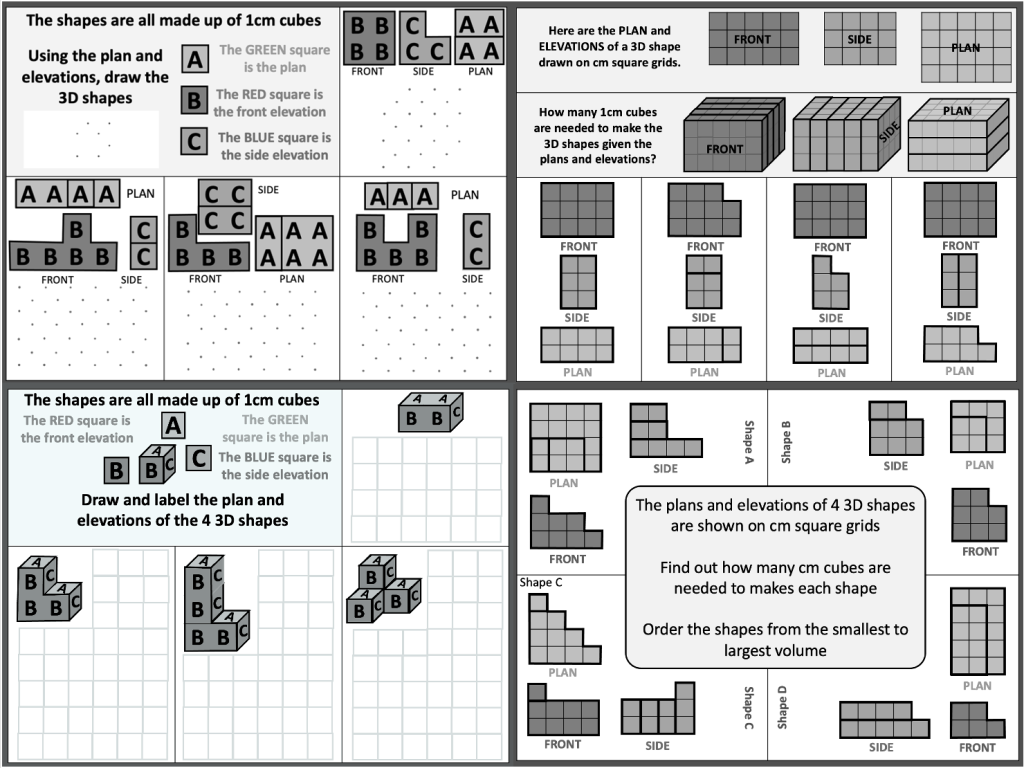

I will be looking at Plan and Elevation next term and then moving on to Volume of 3D shapes.
I wanted to practise Plan and Elevation and then link it to Volume.





This afternoon, I tipped out the plastic 2.5cm tiles and the larger wooden tiles and got out the plastic trays. I started with the wooden tiles because I wanted to design a pattern to make for a “colour the pattern” task and my daughter played with the plastic tiles. She likes to arrange images in each of the differently sized Numicon trays and then stack the trays and ask me to “open the surprise” Today was no different and once I had unstacked the pile and looked, I saw a nice little pattern. She explained that she did the little tray first and then added a row each time she used a bigger tray.
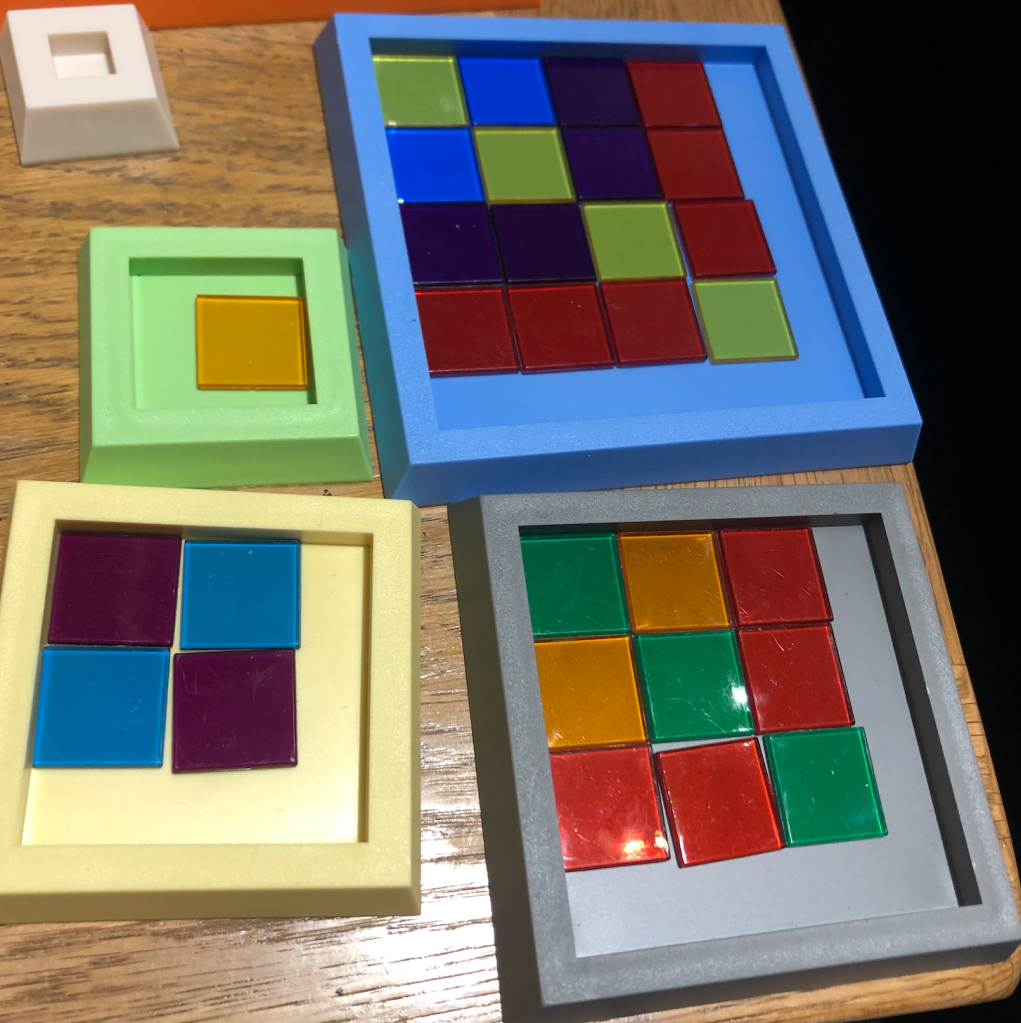
After a while, she pulled out the scales that we’d discovered earlier in the day (we’d done some tidying of her toys and found the scales) She played with these for a while, adding tiles in each side and watching them tip one way or balance. After she had dumped out both buckets, I put 10 large wooden tiles into one of the buckets. I asked her how many plastic tiles would weigh the same. I gave her the other bucket and she started to fill it. She counted up in twos and said; “I think it’s 20,” before replacing the bucket on the other end of the weighing scale. The balance tipped in the wooden blocks favour, so she said she would add more plastic tiles in. She counted out 30 more and realised it was 50. I pulled out all the wooden tiles, except for one and asked her to take how many tiles she thought would make it balance. She left the bucket on the scale and eventually she was satisfied the two buckets were equal when she had just 5 plastic tiles left. I threw in one more tile and she said; “ah that’s easy! Its 5 more plastic tiles” so I threw in another and she did the same. She then said; “lets do more” she then threw in wooden tiles so there was a total of 25 tiles in. She said; “I can work this out” she counted on her fingers in 5’s and stopped at 125. She then threw 125 plastic tiles into the opposing bucket but it tipped ever so slightly to the plastic tiles. She recounted and it was the correct amount so we discussed the fact that one wooden tile might be a little less than 5 tiles.
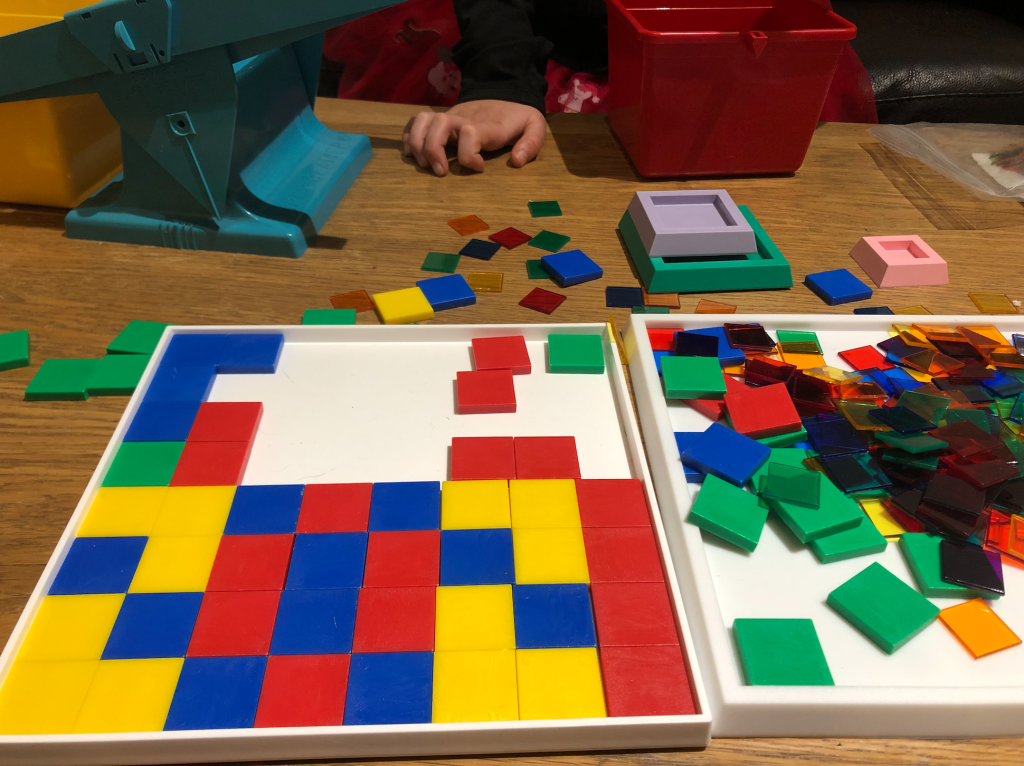

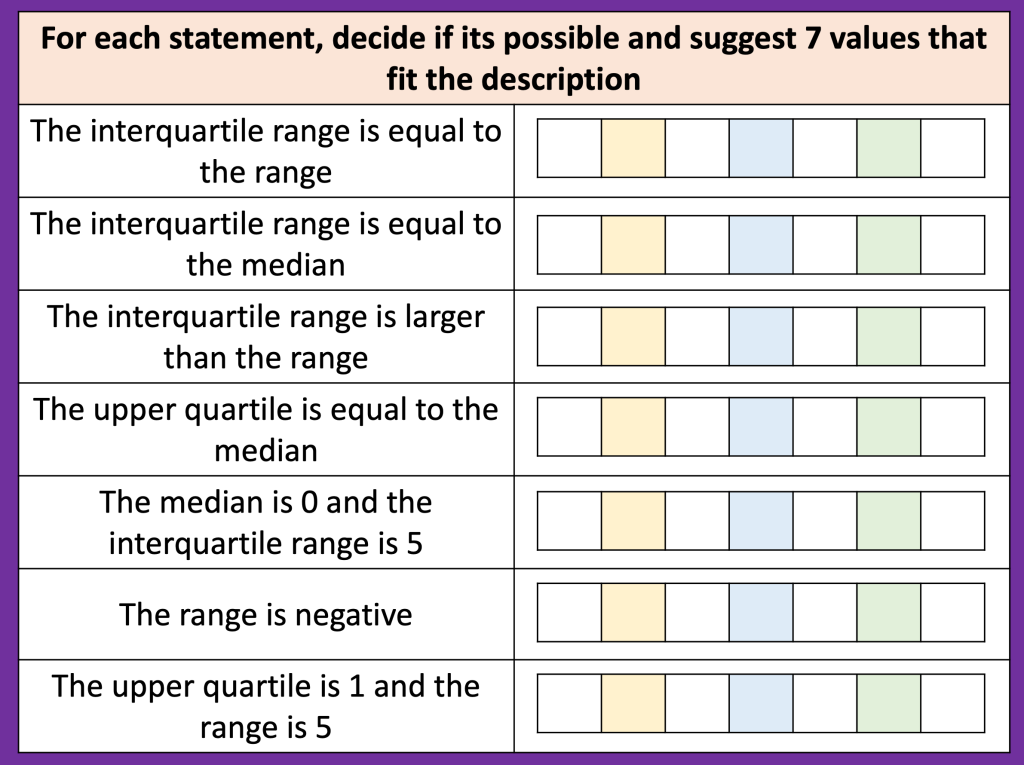
After I introduce angles in parallel lines to my class and discuss the correct reasoning. I want to show them lots of different examples and non examples so they are confident in recognising alternate, co-interior, corresponding and opposite angles, whilst still noticing basic angle facts.
After we have spent time doing this I want to look at these questions
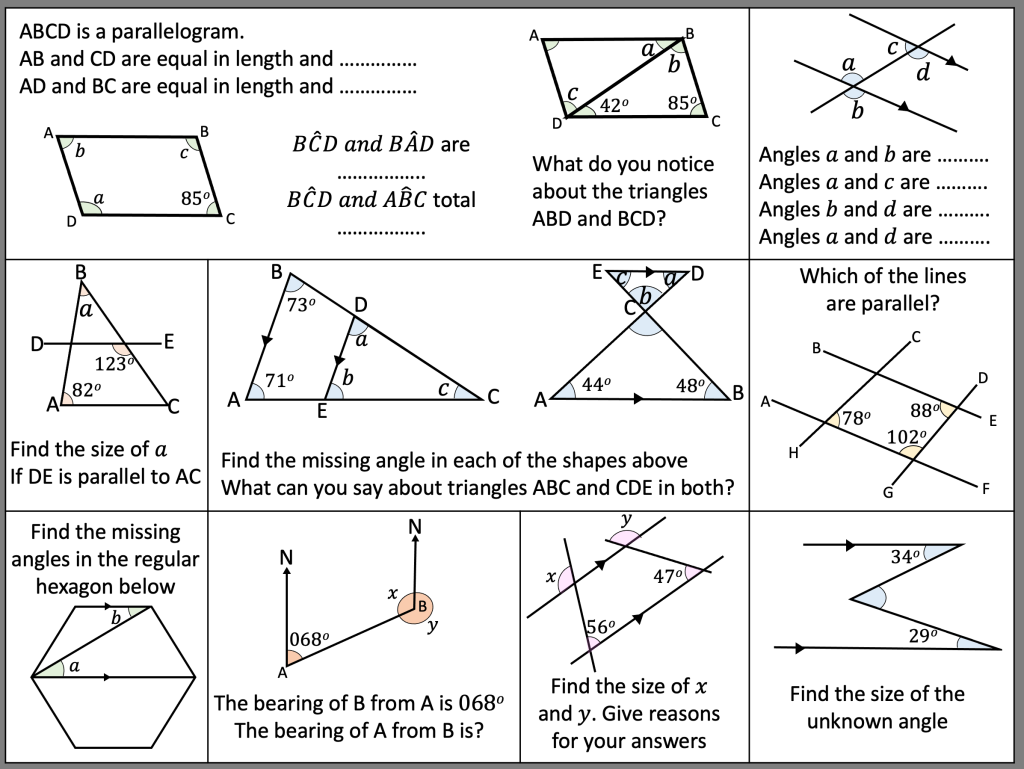
I have been thinking about some further connections between area and surds. I started this thinking a few years back after a discussion with https://twitter.com/Arithmaticks
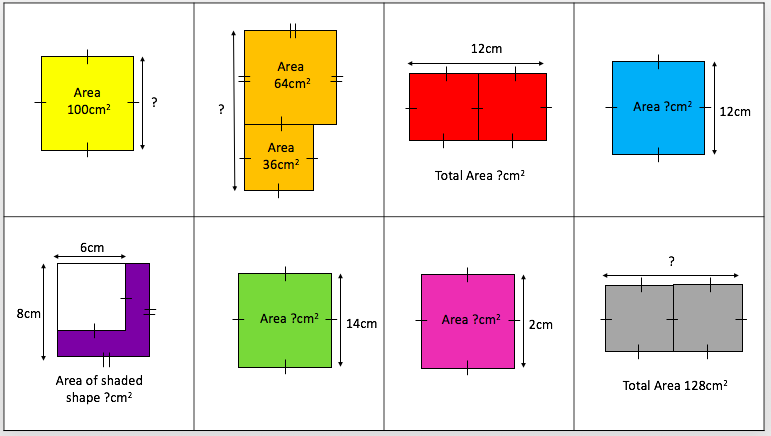
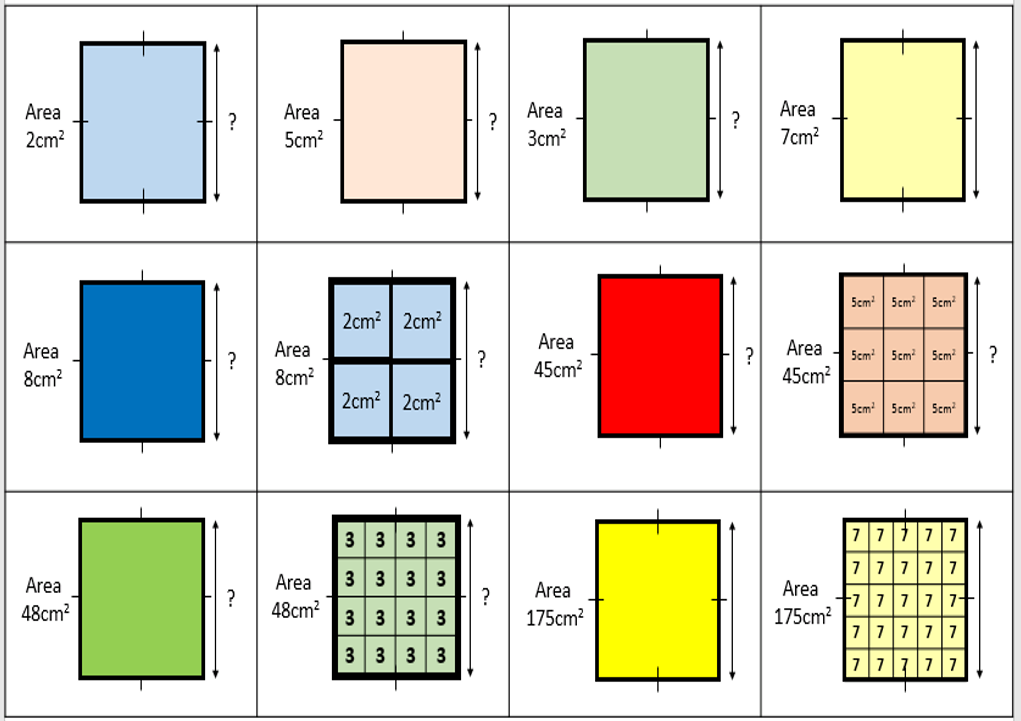
I wanted to look at some shapes where the lengths were roots
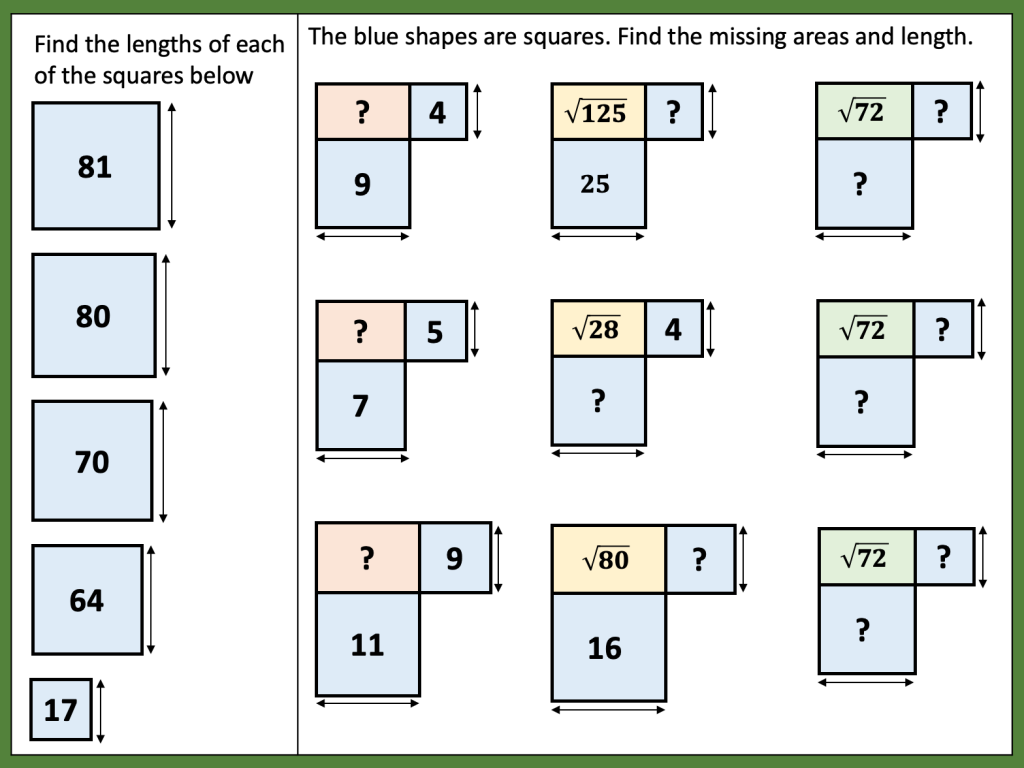

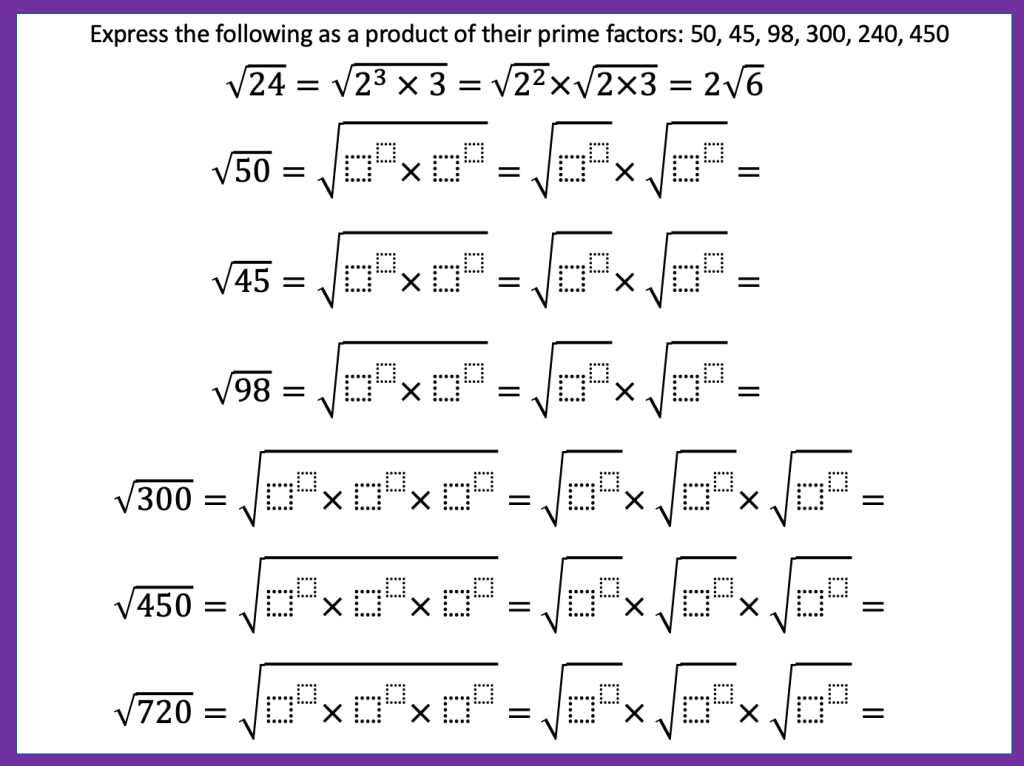
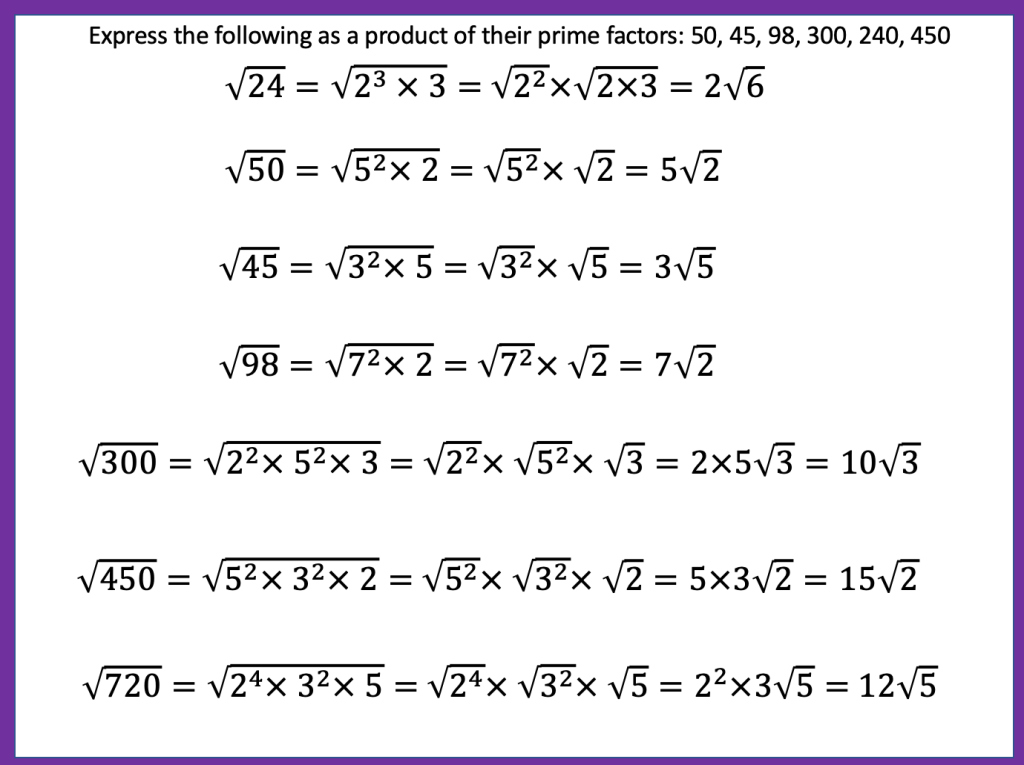
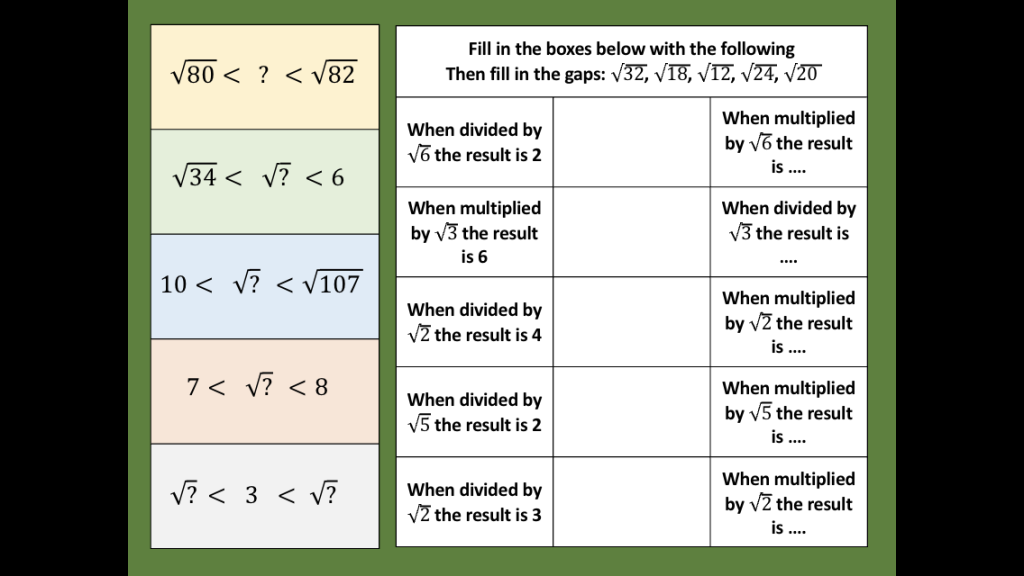
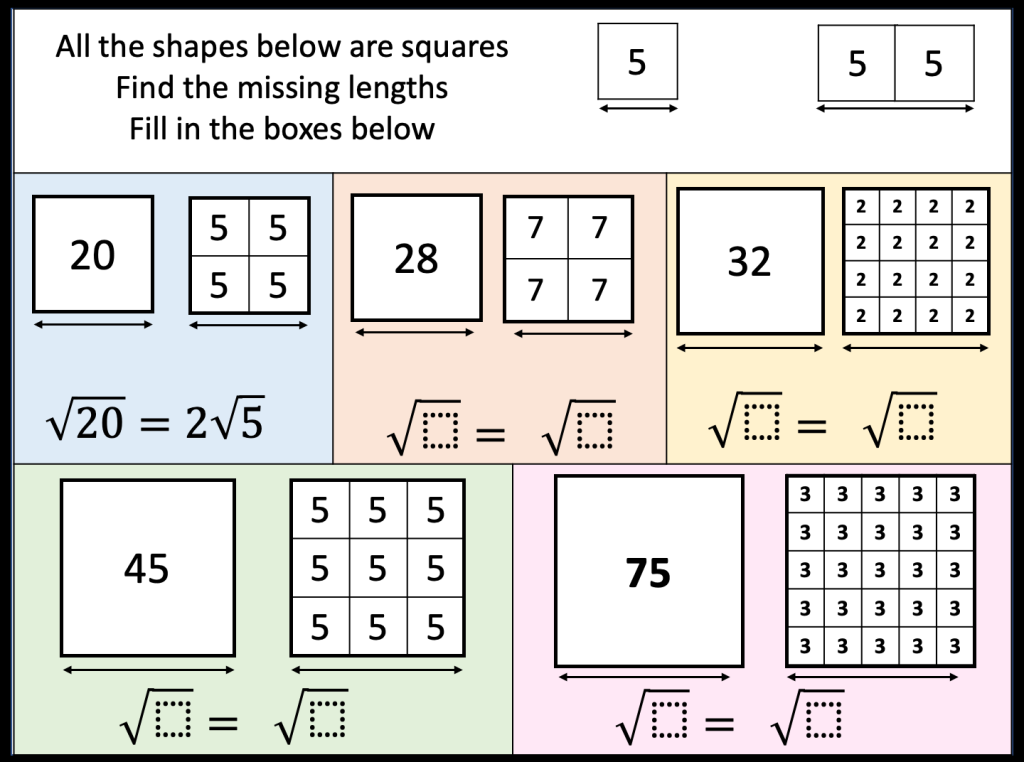

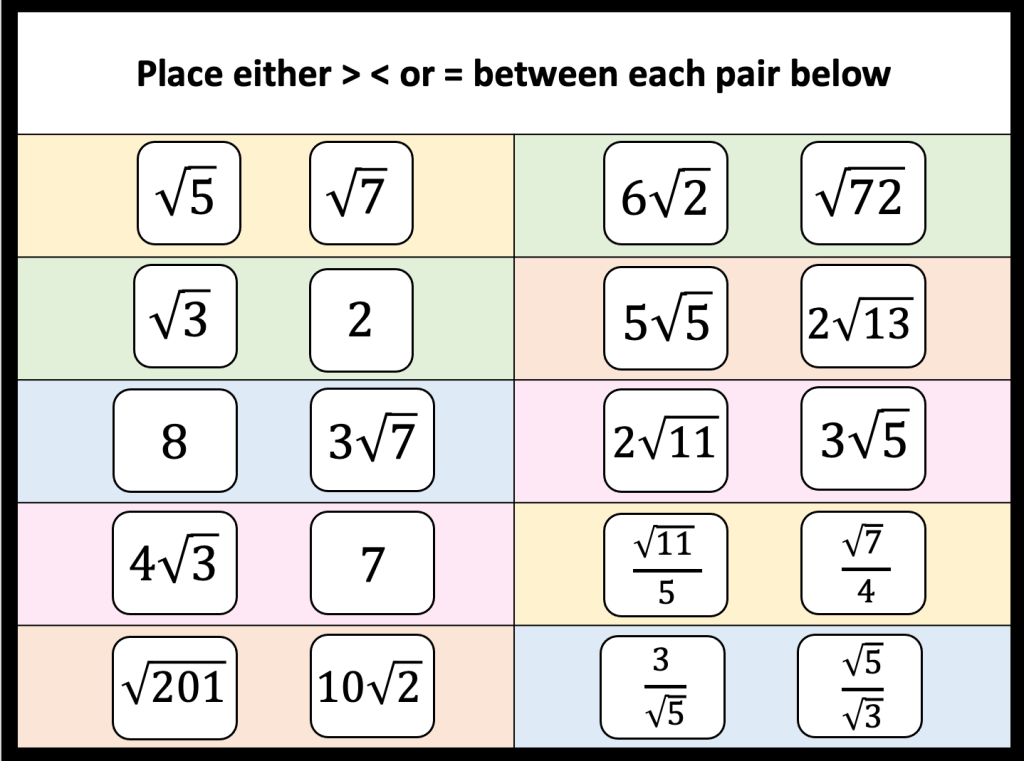
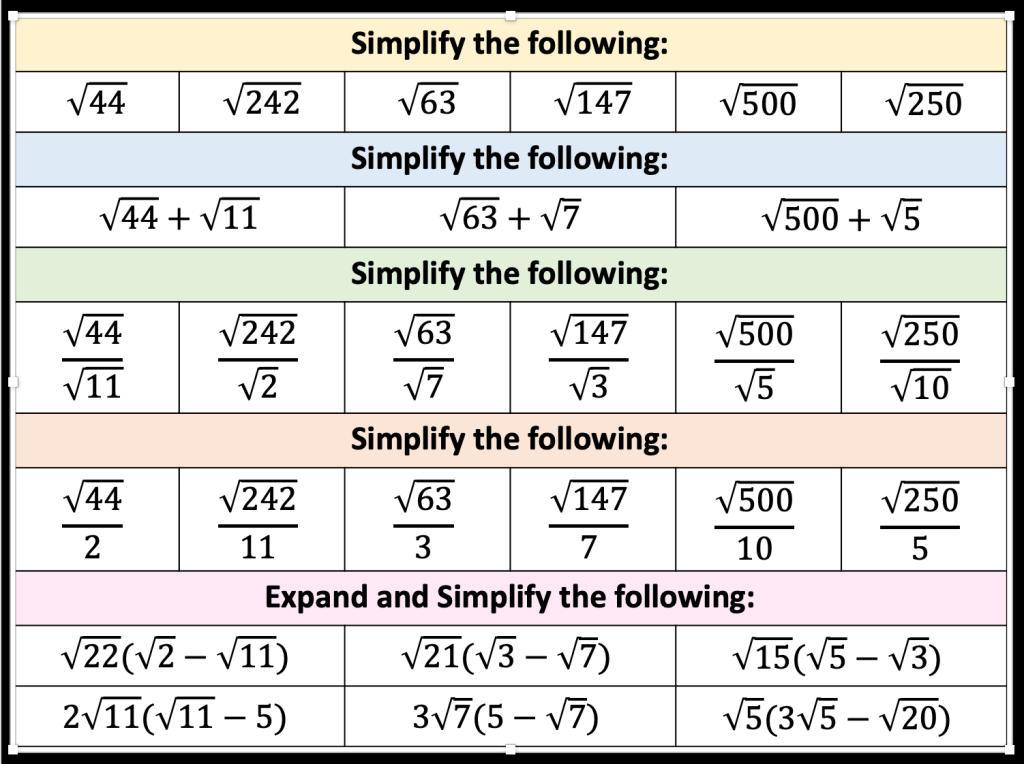
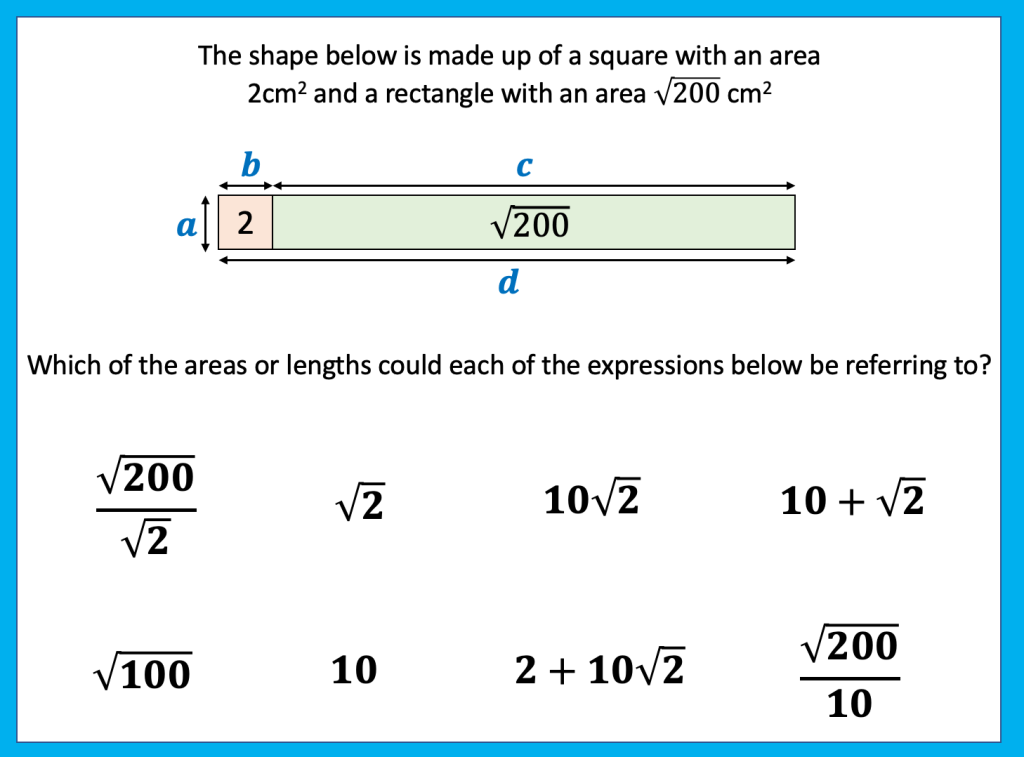
I’m teaching year 11 foundation classes this year and we are looking at quadratic graphs and we’ve previously looked at sequences. We have discussed some of the things they will need to be able to do well to be able to plot the graphs and I want them to see connections with the equations and the graphs such as translations of graphs. We did a lot of discussion about the difference between linear and quadratic sequences and then we looked at plotting linear graphs and the links between the sequence, the y-co-ordinate and the same with quadratic sequences. We also reviewed what we knew about negative numbers, order of operations and substitution.
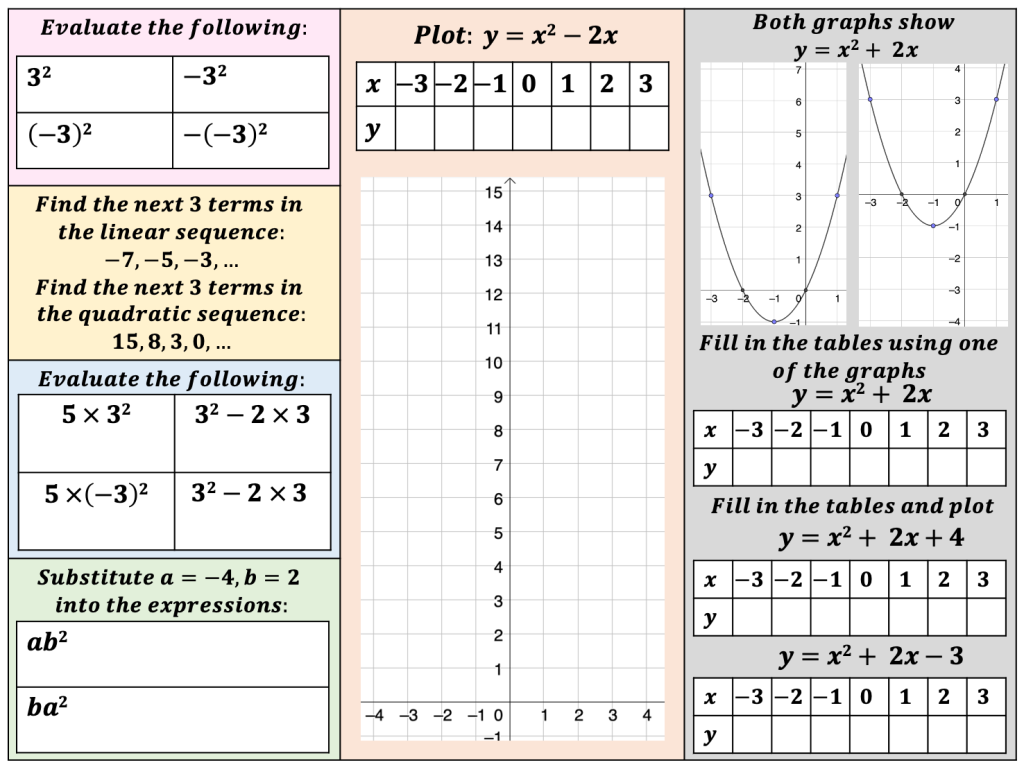
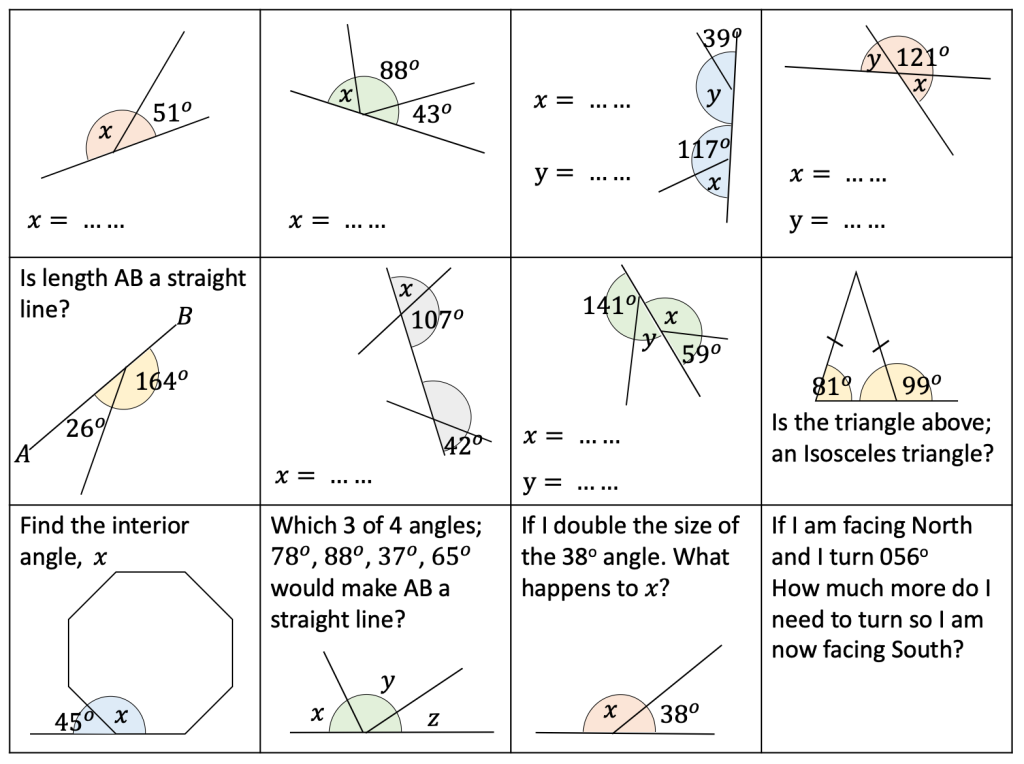
I want to make sure I don’t rush the “angles on a straight line” fact and ensure I cover questions where students have to reason as well as find missing angles. I also want to give students exposure to questions where more than one point is marked on a line and students have to find missing angles around those points.
I love playing countdown with my classes every now and then. Generally I give students longer than they would get in the real game and encourage them to think about different ways to get close to a number using fewer numbers so they can then hit the target number by using the remaining numbers.
EG: if they have a target of 836 and they have the numbers: 8, 50, 2, 4, 3, 1
Rather than finding 8 times 50 times 2 then trying to make 36 from 1, 3, 4
See if they can find 836 by doing 8 times (50 times 2 add 4) this way we reach 832
Students thought this was clever but they weren’t comfortable doing it in practice so I thought I’d give them a different task. I slimmed down the numbers and added more targets. I want to see how many they can make.
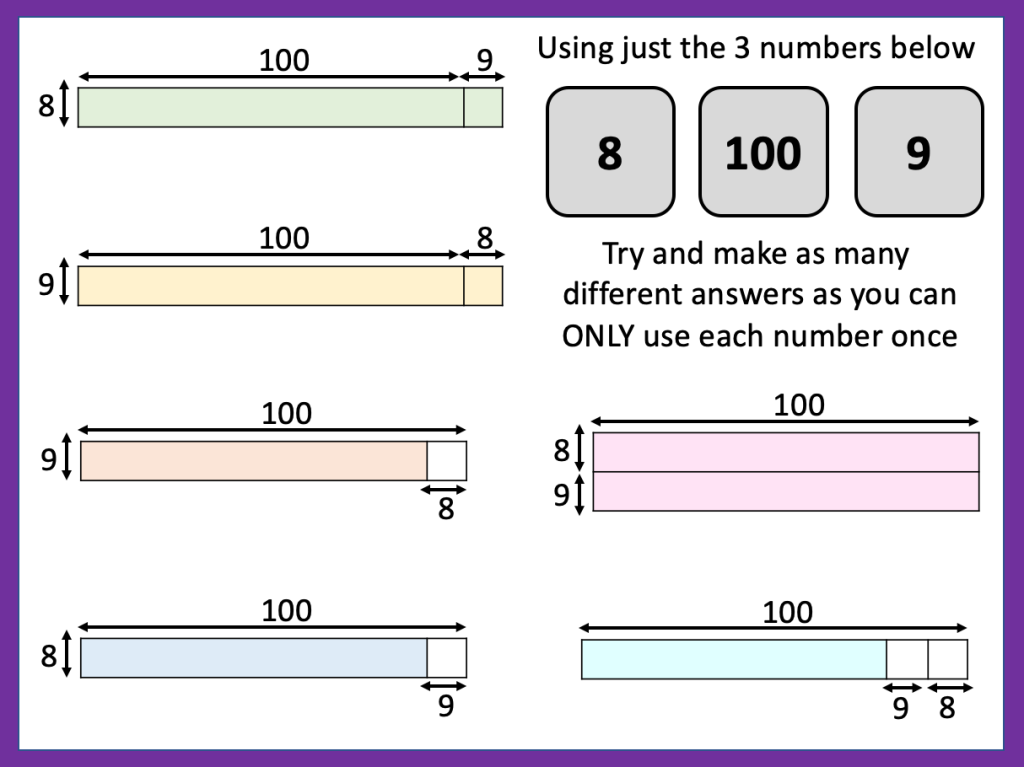

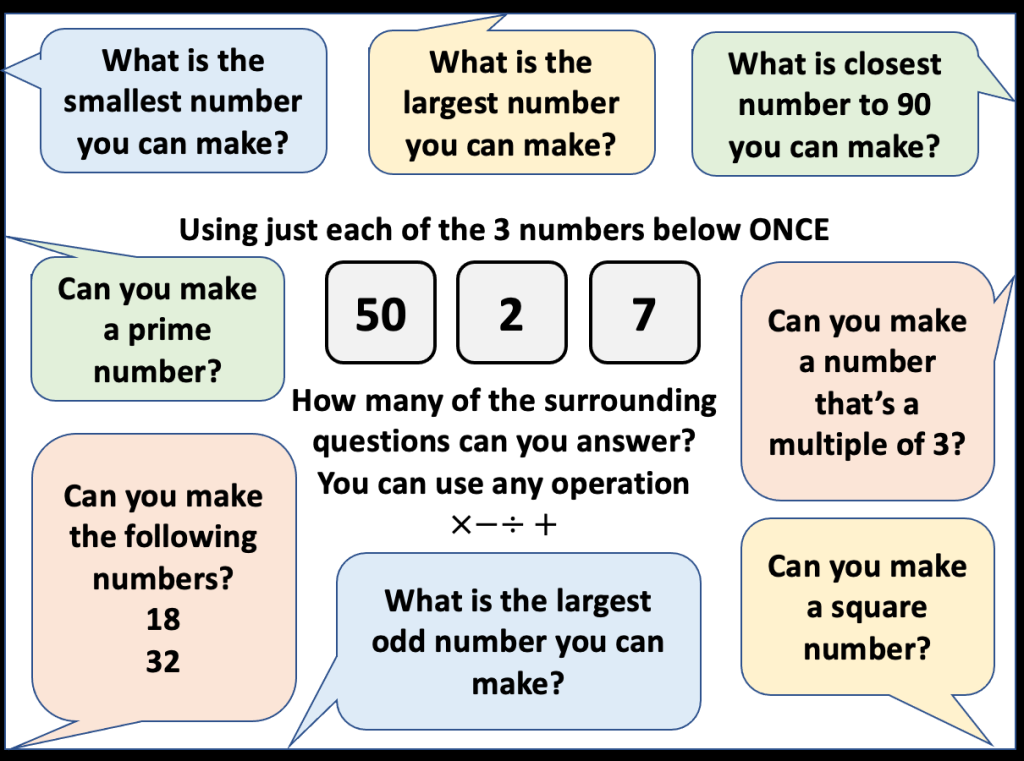
A student asked for help during a game of countdown so I gave him some “clues” (calculations)
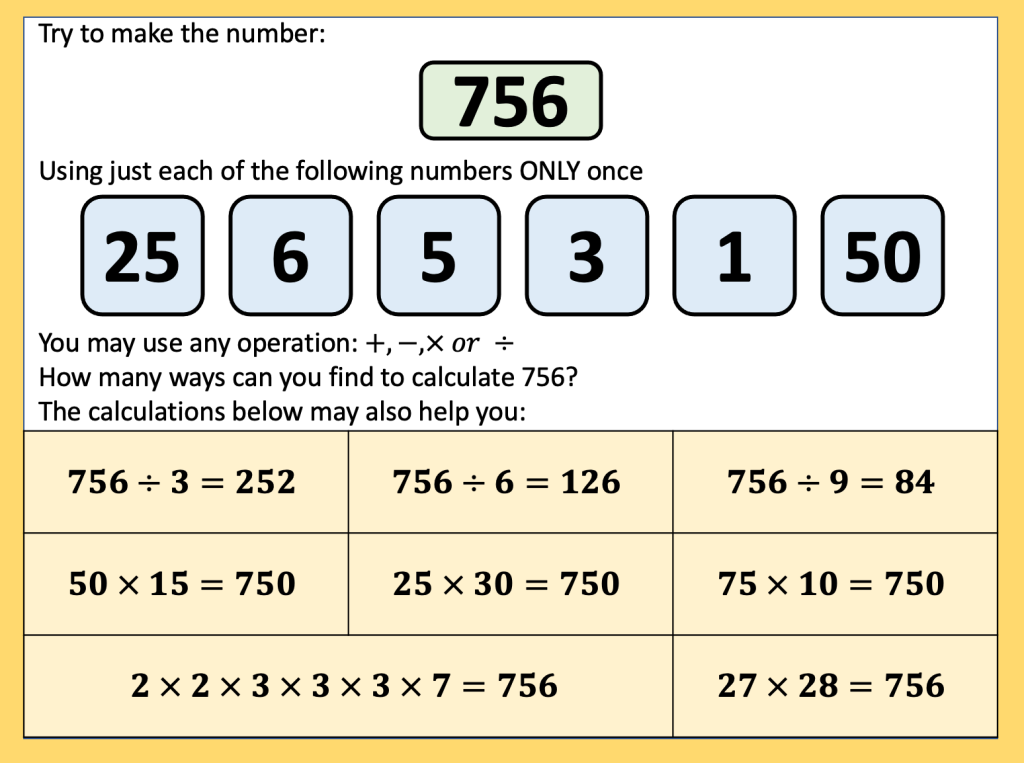
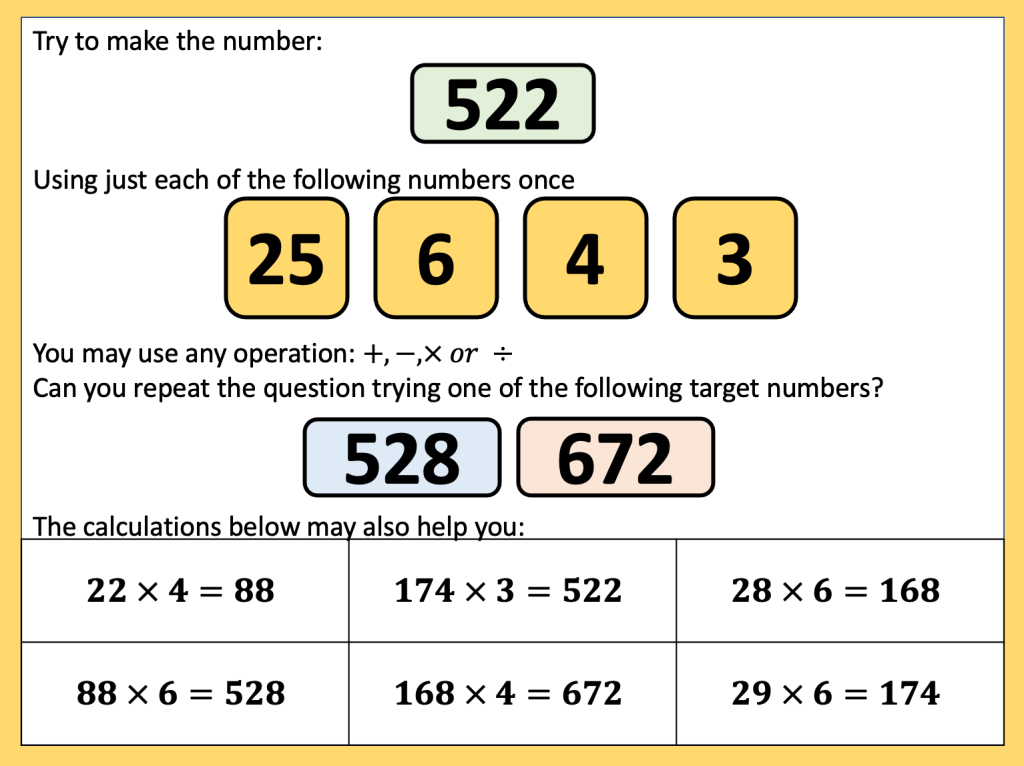
I have been working through linear sequences and the next topic is graphs. It was perfect next step and it allows students to see the sequence increases on a graph. I have often used Boat Hire when first looking at graphs. It’s a fantastic lesson taken from a sequences of lesson featured in ICCAMS Students make sense of the information, rather than plotting an arbitrary equation. Two options of hiring a boat are posed; one is a lower hourly cost but higher initial cost and the other boat company is the opposite way round (higher hourly cost, lower initial cost) Students look at the situation where two choices are posed and are invited to decide which is better. There isn’t a definitive answer because the “better” options is dependant on how many hours you hire the boat for. so this lends itself well to plotting the information on a graph.
The group I’m teaching linear graphs at the moment is in year 11 and we’ve just looked at linear sequences, looked at Boat Hire and now seem comfortable with plotting equations. My next step is for the class to spot parallel and perpendicular lines and what that means for the gradient. I want them to see what happens to the line when the gradient is a larger value and also link it back to linear sequences.
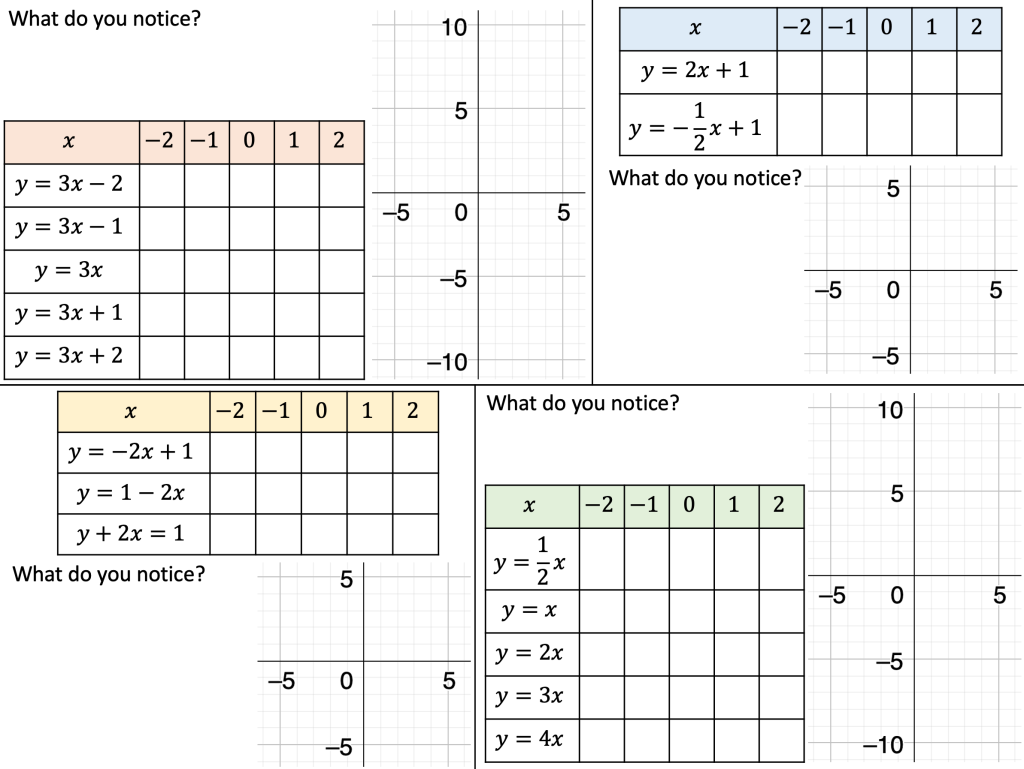
A really interesting lesson with year 11. We were looking at direct proportion and discussing an EG involving buying pens. We had sketched a graph (number of pens and cost) and one student said “what if you have a discount when you are paying?”. So we discussed how we couldn’t just multiply the number of pens by a constant value and that we had a second step of subtracting the discount. We then thought of a scenario where we would add a constant amount (buying one bag) It reminded us of our last topics work on sequences. if we looked at a linear sequence of say 3n We could multiply the term number by 3 but if the sequence increased by 3 and there was a subtraction/addition (shift) after we would need to apply that after.
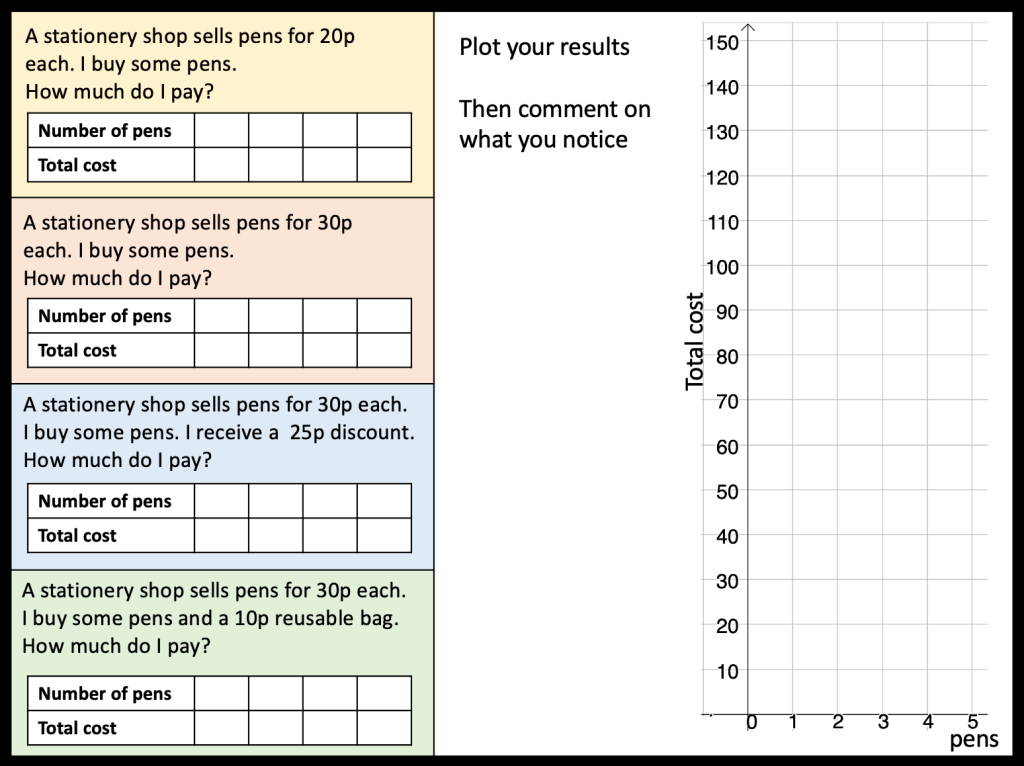
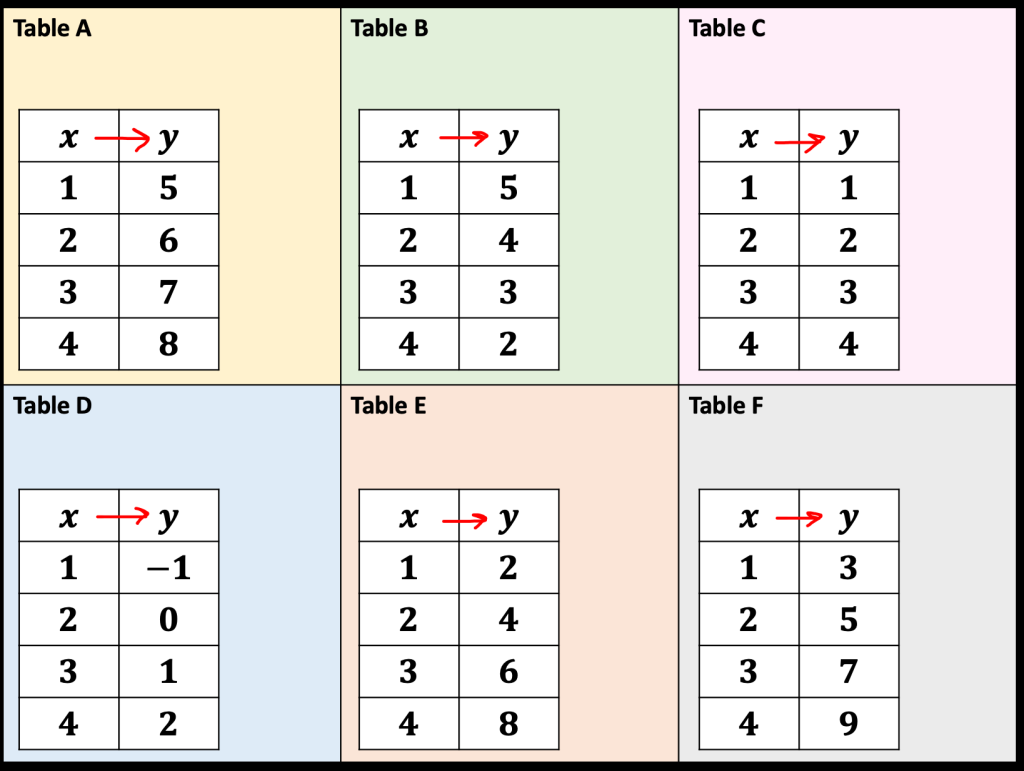
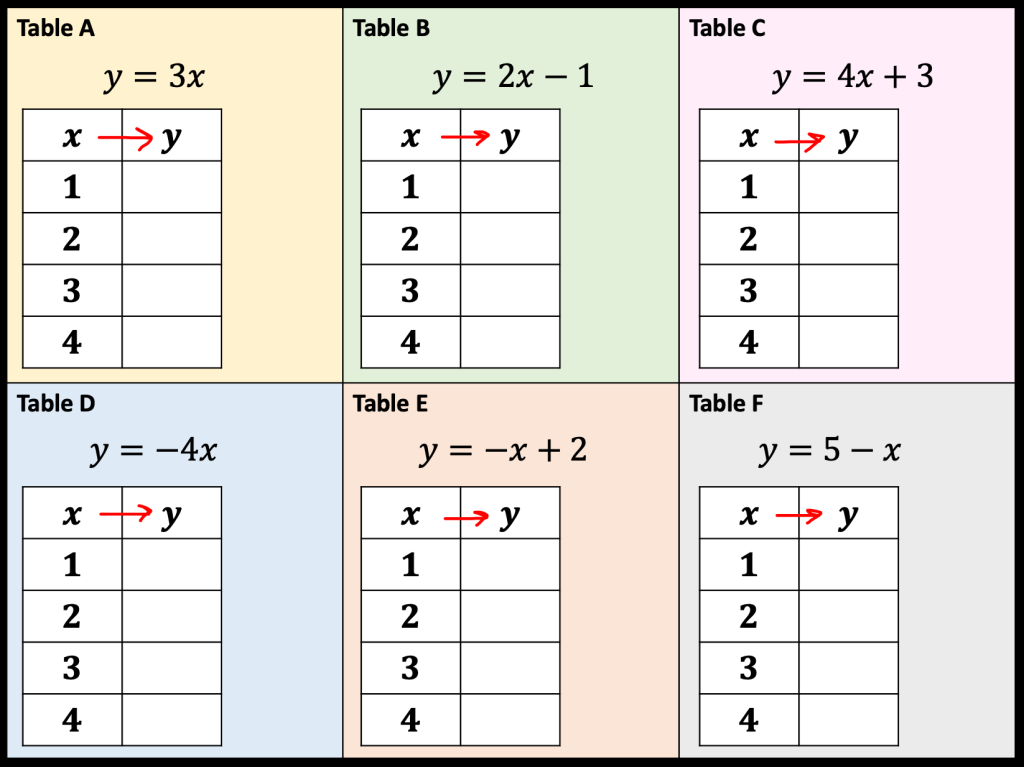
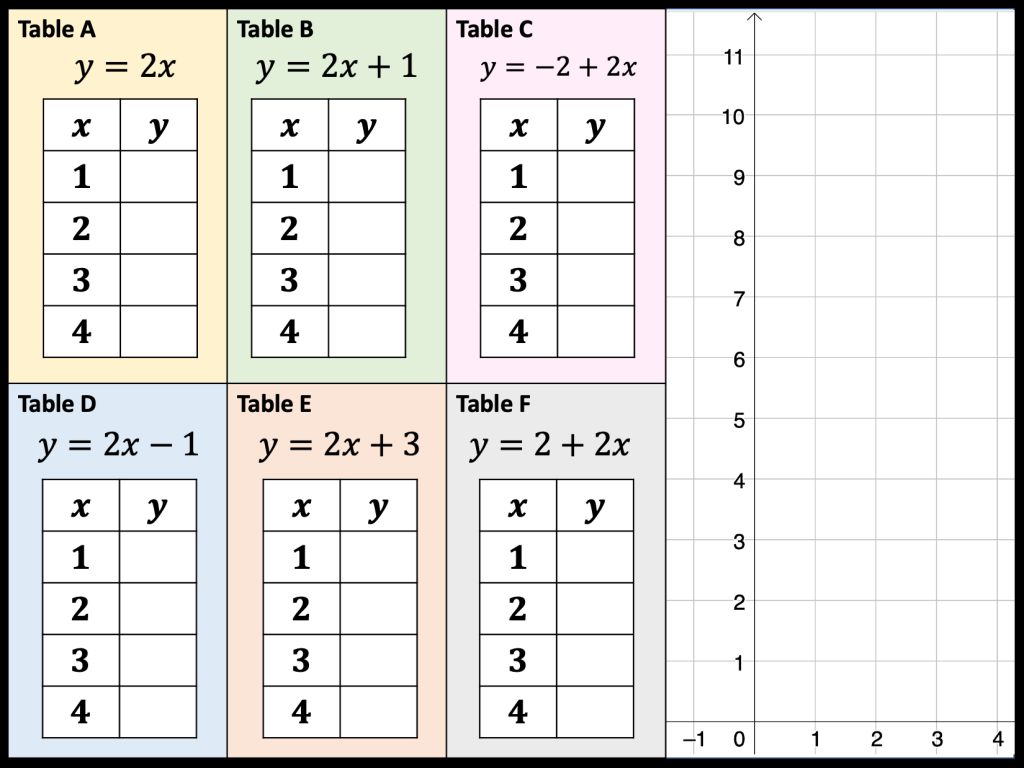
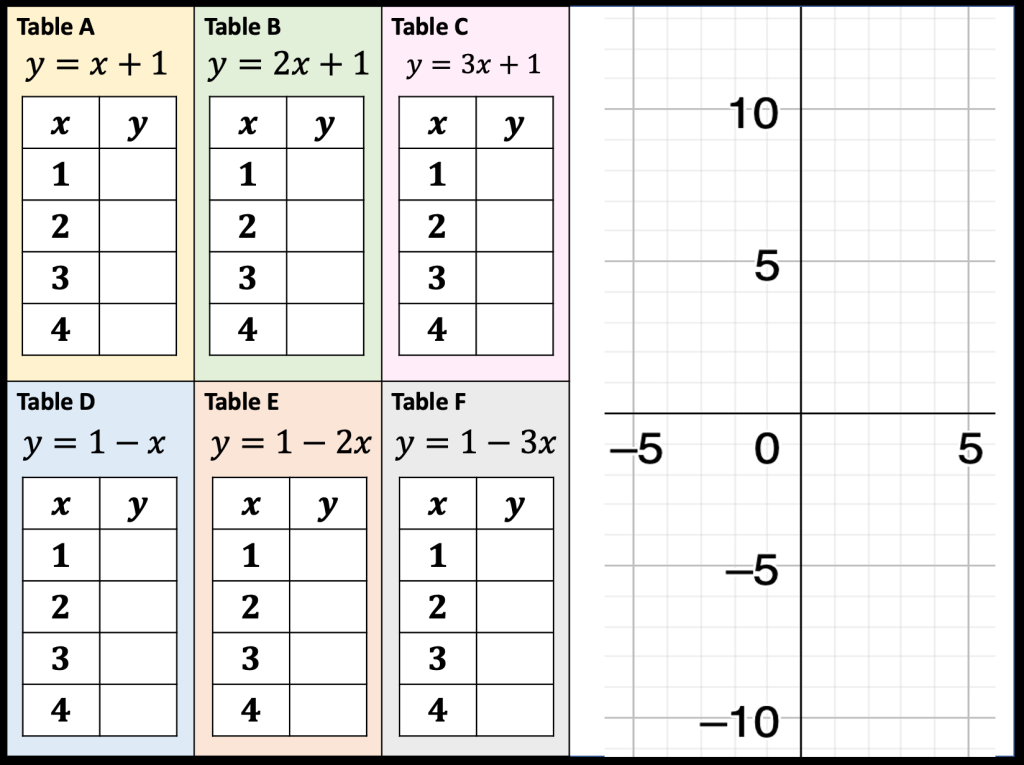
Today my class looked at solving equations. I decided that we needed to review solving equations and substitution in order to work through simultaneous equations. However, when we looked at the equation:
7 – 2x = 9
The issue students had with this question was that they wanted to add 7 to balance the equation because they believed that the sign was part of the 7. We had to stop and look at what 7 – 2x meant and how it also meant – 2x+7.
They weren’t convinced initially and they are an excellent class to teach. They share their ideas continuously and aren’t afraid of getting things wrong. I felt like each time I uncovered an issue, I was faced with another. We spent time looking at equivalent calculations than solving equations.
The class are in year 10 and they are a set 2 of 4, yet they seemed surprised that – 4 + 5 = 5 – 4
So for the next lesson we will be looking at the following questions
